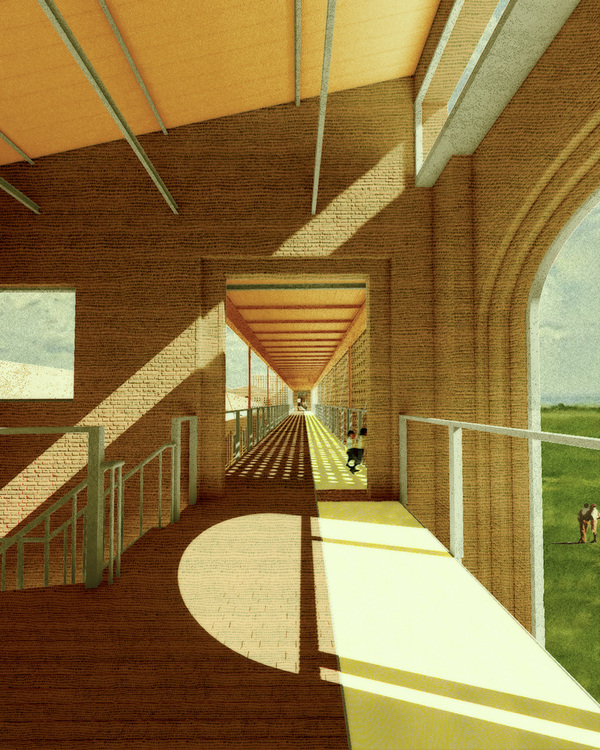Rethinking Battery Storage Systems
Cumbria Clean Energy Strategy document indicates future projects for expanding renewable energy production primarily through offshore wind farms. However, such energy production fluctuates heavily depending on climate.
Located in Cleator Moor, this power plant aims to store this energy, to be redistributed during the winter when demand increases through two methods. 1. Sand Battery: The first method takes excess electrical energy to heat a pool of sand in an insulated silo. During the winter, the heat is transferred directly into the homes of Cleator Moor through network heating. 2. Cryogenic Battery: Excess energy is used to turn air into a pressurised liquid state. To re-harness energy, liquid air is released to turn a turbine.
My proposal also acts as a cultural catalyst by promoting and educating on sustainable energy sources and storage. Throughout the storage systems are elevated walkways allowing visitors to observe the storage in operation. Moreover, through the site and on walkways are sand pits, further embedding the architectural design and experience into the program. Likewise, a fragment of a wall functions to redirect wind into the structure to funnel the air needed for the cryogenic battery. The visitors can experience and observe this while maintaining health and building safety requirements.
The battery storage system deeply explores the influence of architectural design and technological advancement on individual human experience and the collective community.


